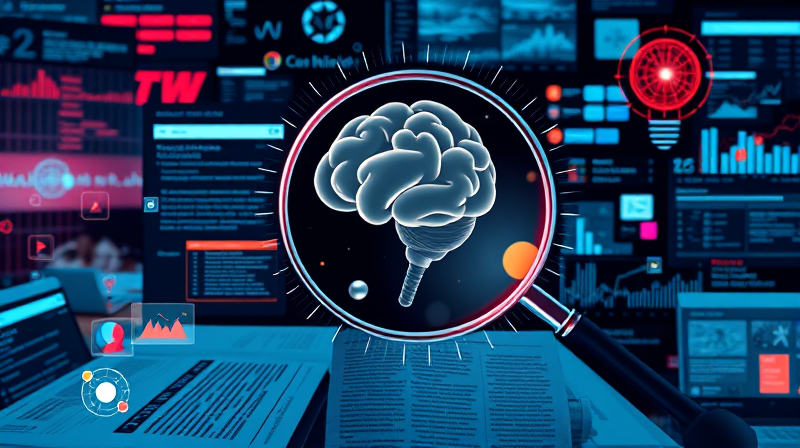In an era inundated with information, developing strong analytical thinking skills has become essential. The way we interpret and act on news stories impacts not only our understanding of the world but also shapes our opinions and decisions. Engaging critically with daily headlines empowers us to cut through sensationalism and misinformation, ensuring that our decisions are built on credible evidence.
Every day, we are flooded with a variety of news stories covering a myriad of topics. To remain informed, we must adopt an analytical approach that goes beyond merely reading headlines. Instead, we can learn to think deeply, question assumptions, and engage in a process that encourages robust understanding.
Identifying Credible Sources
The first and fundamental step in developing an analytical mindset is to identify and rely on credible sources. Often, we see headlines that try to entice our curiosity or evoke an emotional response. However, determining the credibility of the source is paramount. Established news outlets and experienced journalists tend to provide information that is well-scrutinized and verified.
Here are some sub-strategies to help you identify reliable sources:
- Check for professionalism: Look for transparency in the news source’s design, clear contact details, and commitment to ethical journalism.
- Assess the balance: Reputable sources strive to present balanced viewpoints and provide evidence-based reporting.
- Review editorial standards: Establishments that adhere to rigorous standards are less likely to engage in sensationalism.
This careful examination allows you to filter out unreliable content and focus on news that informs rather than manipulates.
Cross-Checking and Reading Critically
One of the best defenses against misinformation is to cross-check information. Don’t rely on one single perspective or news outlet. By verifying facts with multiple sources, you decrease the risk of being misled by inaccurate reporting. When you cross-check, you also reveal potential biases that may exist in individual stories.
A critical approach involves not only reading beyond the headline but also evaluating the article's depth. Without reading the full text, you might miss the nuanced perspective that supports or contests the initial impression provided by the headline. Critical reading is a powerful skill that transforms a passive consumption of information into an active, investigative process.
Evaluating Language and Context
Every story is told through a choice of words, and evaluating the tone and language used in news articles can help you distinguish objective reporting from biased opinion. When you analyze the language, focus on whether the article employs emotionally charged phrases or remains factual.
Additional tips to hone your evaluation include:
- Examine headline vocabulary: Sensational words are often used to evoke strong emotions without adding substantial factual support.
- Read beyond the headline: Headlines are designed to grab attention; understanding the full narrative is necessary for an accurate picture.
- Understand the broader context: Look at the historical, cultural, and socio-economic contexts that shape the news story. This critical backstory often explains the motivations behind certain reporting angles.
By being mindful of language choice, you not only become more critical of the news but foster a habit of questioning your own interpretations.
Cultivating a Thoughtful, Inquisitive Mindset
Beyond verifying the facts and sources, developing news literacy involves questioning assumptions—both those of the article and your own personal biases. Questioning preconceived notions can lead you to diverse perspectives that challenge your worldview and enrich your understanding of complex issues.
A proactive approach involves participating in discussions and dialogues about current events. Communication with others can highlight different opinions and encourage healthy debate. Through dialogue, you may discover insights that were previously overlooked, further strengthening your analytical skills.
Furthermore, engaging with data-driven journalism adds another layer to your analytical capabilities. In an age where statistics and graphs tell significant parts of the story, being comfortable with data literacy allows you to interpret information more accurately and challenge mismatches between data and reported conclusions.
Practical Strategies for Daily Implementation
Consuming news analytically requires intention and practice. Developing such a mindset involves adopting a set of strategies that can be practiced daily. The following tips are essential for nurturing an analytical approach:
- Stay curious: Always ask questions about the news you read. Who benefits from a specific narrative, and what might be left unsaid?
- Engage with multiple sources: Diversify your news intake to ensure a well-rounded perspective that reflects different viewpoints.
- Delve deeper: Supplement headlines with full articles or additional background information to avoid surface-level understanding.
- Practice reflective thinking: After consuming news, take a moment to reflect on what you learned and how it aligns or contrasts with your previous beliefs.
Building these habits over time leads to better judgment and a deeper understanding of current events. It transforms news consumption from a passive activity into a dynamic practice that reinforces a more engaged, thoughtful citizenry.
In conclusion, analytical thinking is pivotal in the modern media landscape. By focusing on credibility, engaging in critical reading, questioning assumptions, and improving data literacy, you can transform the way you interact with daily headlines. Every news story becomes an opportunity to refine your analytical skills, inspiring a more informed and reflective approach to life.
Remember, the goal is to foster a mindset that not only absorbs information but actively interrogates it. With practice and persistence, you will reap the rewards of a deep, insightful engagement with the world around you.








